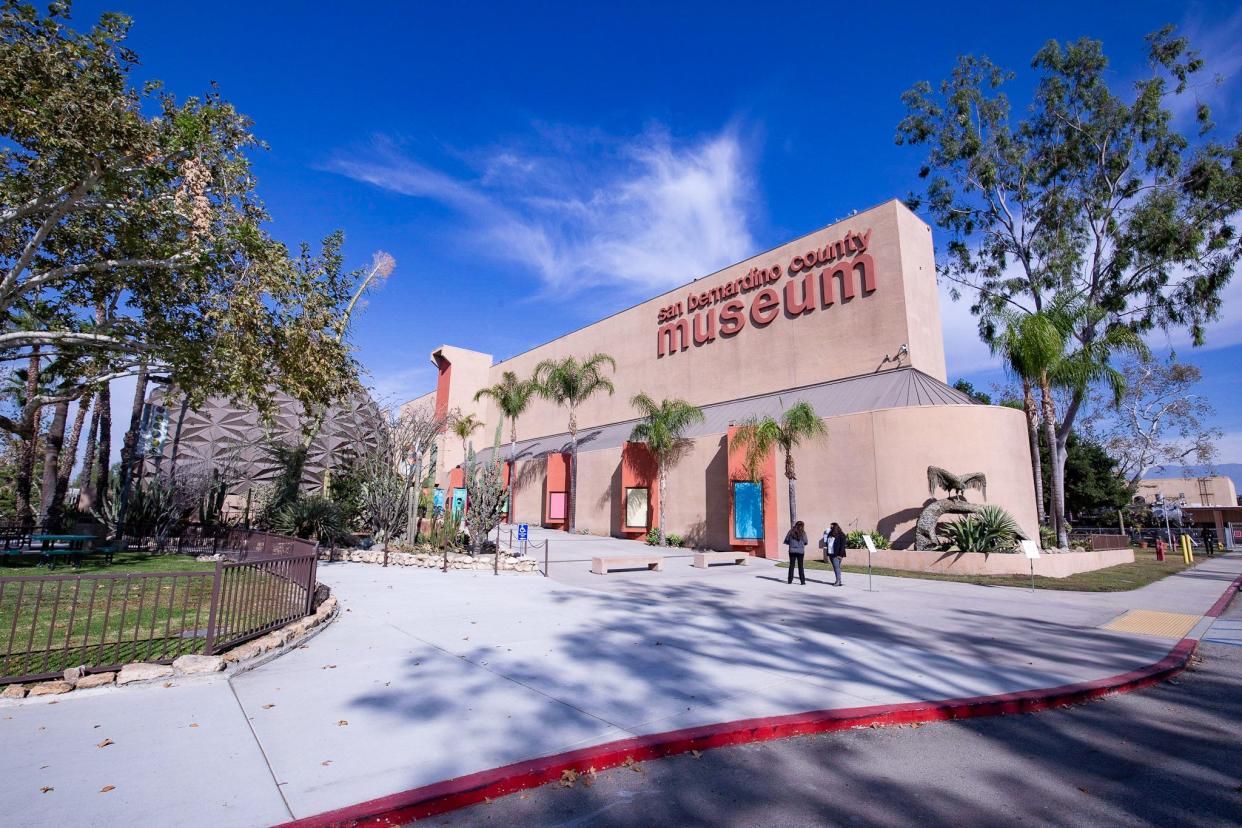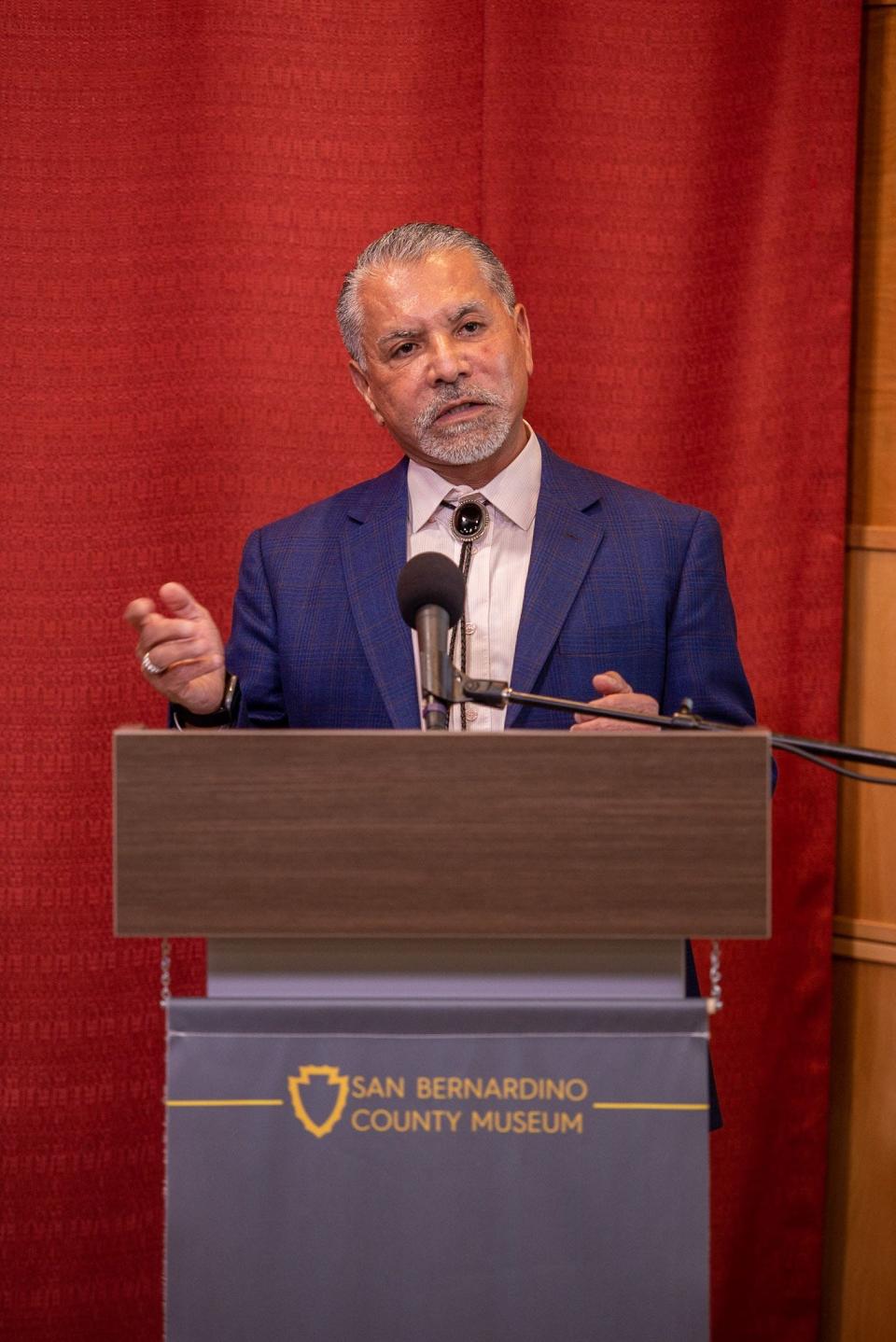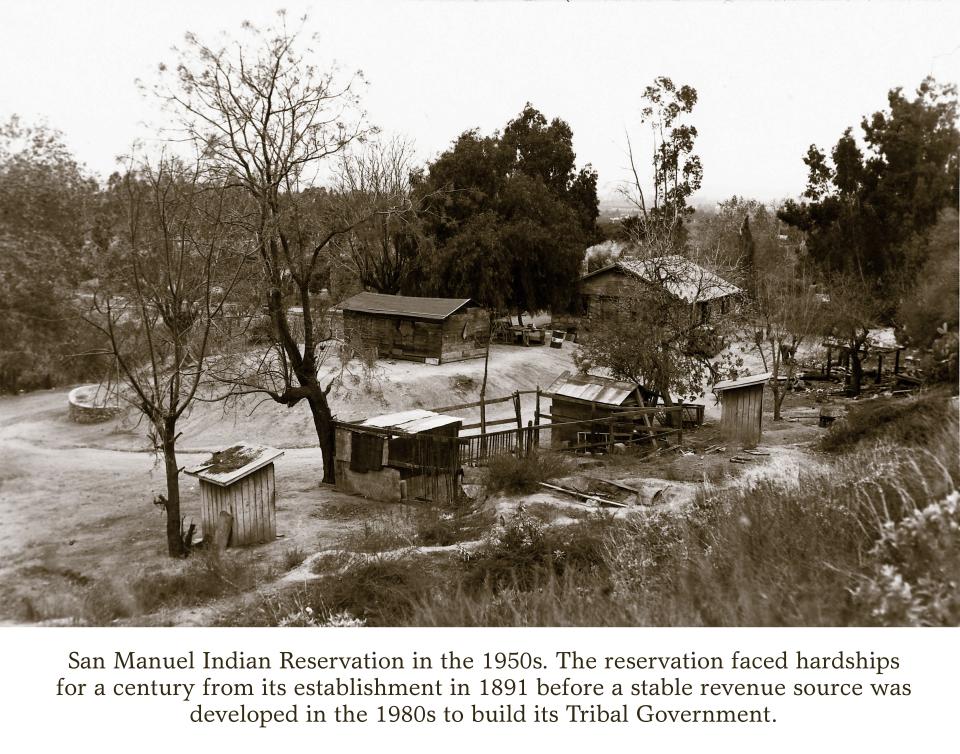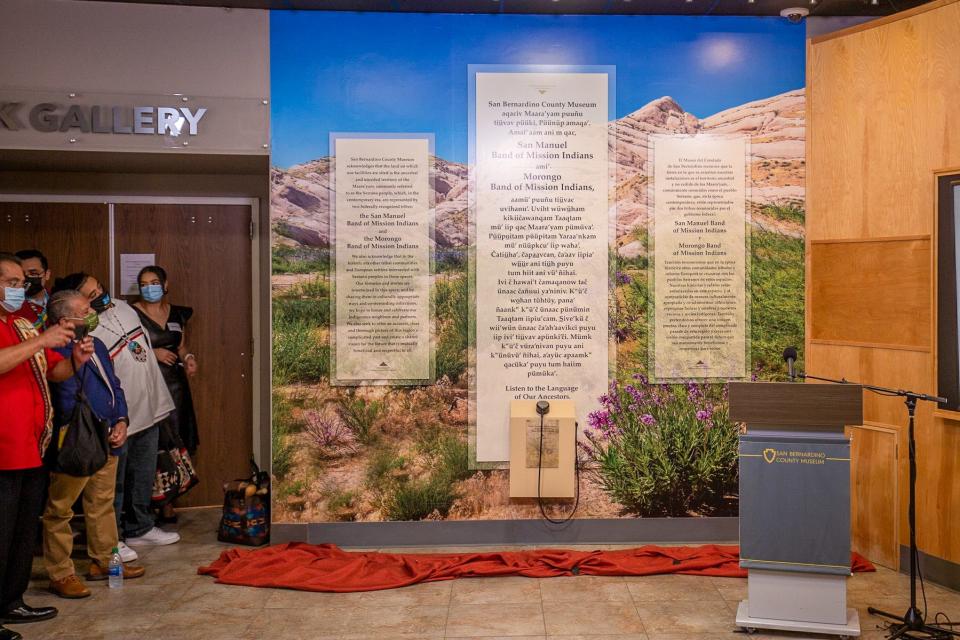San Bernardino County recognizes museums sit on Serrano tribal land

San Bernardino County officials have acknowledged for the first time that three museums sit on ancestral land belonging to some of Southern California’s first inhabitants, the Serrano people.
The San Bernardino County Museum unveiled a display Wednesday in English, Spanish and the Serrano language which said facilities — including the Victor Valley Museum in Apple Valley and the Yucaipa Adobe — sit on the “ancestral and unceded territory of the Maara’yam, commonly referred to as the Serrano people.”
The display also allows visitors to listen to the language being spoken.
Although the museum in Redlands has exhibited baskets, pottery and other Indigenous artifacts for years, there had never been a formal recognition that the surrounding land is also tribal territory.
“Today’s acknowledgment of ancestral territory holds significant meaning for the Serrano people by formally recognizing our enduring connection to the land,” said Morongo Band of Mission Indians Tribal Chairman Charles Martin whose tribe refers to the Serrano people as Maarrenga'yam. “Our history, culture, and traditions are centuries old and will always remain deeply embedded in these lands.”

The chairman of the other federally-recognized tribe representing the Serrano people, Ken Ramirez of the San Manuel Band of Mission Indians, told ABC7 that his ancestors’ land covered 7.4 million acres at one point in history.
“Villages all over the High Desert. And so now, we’re down to one square mile on the reservation at San Manuel,” he said. “And just to be acknowledged as part of the community? This is great.”
A history of assimilation
The Serrano people were one of many Indigenous tribes thriving in California before European colonists arrived and brought with them disease, violence and what some scholars say amounted to slavery.
In the late 18th century, the Spanish began building missions to convert Native Americans to Catholicism. Those who were baptized were expected to work, learn Spanish and attend church, setting off a pattern of erasing tribal languages and customs.
Diseases the colonist brought with them also killed thousands of Native Californians, reducing the overall population by 1834 to only about 6%, or 20,000, of its original number at 300,000 pre-mission, according to History.com.
Locally, the Maara’yam — who traditionally lived in the San Bernardino mountains near Big Bear Lake — were held at a mission outpost known as the Asistencia, also in Redlands.
The missionaries used the clan members as labor digging an irrigation canal known as the Mill Creek Zanja which supplied water for the area.

When the Gold Rush happened and settlers surged in, “indigenous people who remained on their ancestral lands were viewed as a nuisance, and were often the victim of harsh treatment and violence,” the San Manuel tribe said.
More recently, Ramirez said his grandmother and others were “taken” to boarding schools where “they were stripped of their language, stripped of their culture.”
“Couldn’t talk it, couldn’t learn it, couldn’t feel it, couldn’t live it,” he told ABC7.
By the 21st century, there was only one known first-language speaker of Serrano, according to UC Berkeley.

The language has experienced a revitalization, however, in recent years with help from the local tribal community. Cal State San Bernardino began offering courses in Serrano in 2013.
Karina Torres, a business committee member for San Manuel, said as a parent, her “heart (was) overjoyed to know that when my children visit this museum, they will be greeted and acknowledged in their own language.”
“Our Serrano language, like our people, have struggled to survive. At times like this, we acknowledge that our elders went through to remain the Serrano people, to preserve their language and their culture,” she added. “They fought to keep their identity in a world that tried to strip them of who they are.”
Daily Press reporter Martin Estacio may be reached at 760-955-5358 or MEstacio@VVDailyPress.com. Follow him on Twitter @DP_mestacio.
This article originally appeared on Victorville Daily Press: San Bernardino County recognizes museums sit on Serrano tribal land

